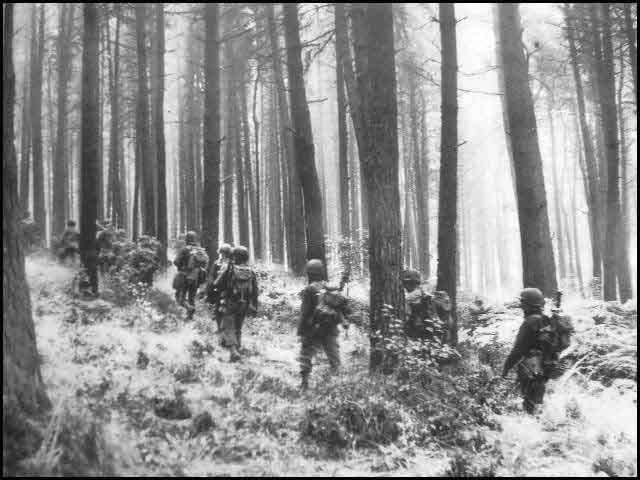
 Hello and welcome back to Nametag Defilade! My name is Owen and this is post number three covering the Battle of the Bulge.
Hello and welcome back to Nametag Defilade! My name is Owen and this is post number three covering the Battle of the Bulge.
So far, we’ve covered the planning phase of the coming offensive in the Ardennes, beginning with the attempt on Hitler’s life in the July 20th Plot and the sudden influx of fresh troops to the front lines after it failed. We also laid out Hitler’s reasons to conduct the offensive, the plan he put in place, and the signs an offensive was coming that the allies missed. The more astute of you may have noticed at the end of my second post, a brief mention that a young woman from Luxembourg had stumbled across a larger-than-expected German force on the night of December 13th and 14th and reported it to American forces in Diekirch.
On the night of December 14th, a hastily mustered patrol of 12 men from the 112th Infantry Regiment, sent to verify the claims of the woman from Luxembourg, slipped past German lines near the village of Ouren and seized a German-held pillbox, capturing 20 prisoners. While two men led the prisoners back to American lines, the remaining ten watched from the pillbox as the day went on with mounting concern as multiple German formations arrived and settled down in the woods nearby. This was not a normal day in the quiet Ardennes. Shortly before midnight on the 15th, the patrol finally snuck back to American lines. In nearly every direction, they ran into freshly-occupied German positions before finally deciding to gamble and walking straight through a German encampment, some tents with candles still seen glowing from within. They returned to their headquarters before dawn on the 16th and explained to their commanders what they saw, but it was already too late.
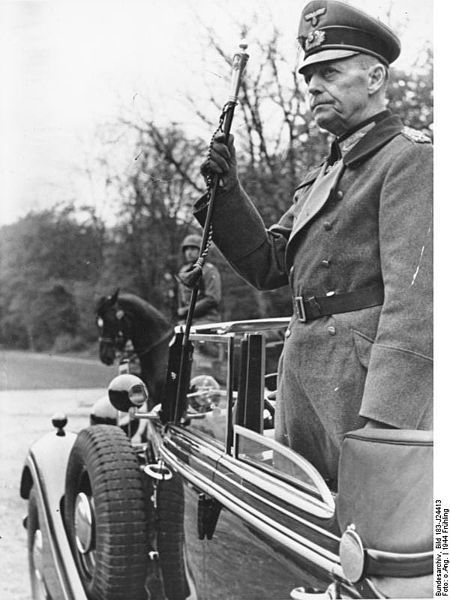 That night, in German assembly areas, a message from Feldmarschall Von Rundstedt was read to the soldiers, reading:
That night, in German assembly areas, a message from Feldmarschall Von Rundstedt was read to the soldiers, reading:
Soldiers of the Western Front!! Your great hour has arrived. Large attacking armies have started against the Anglo-Americans. I do not have to tell you anything more than that. You feel it yourself. WE GAMBLE EVERYTHING! You carry with you the holy obligation to give everything to achieve things beyond human possibilities for our Fatherland and Führer!
In von Rundstedt’s Ziegenberg Castle headquarters on the night of the 15th, the keeper of the OB West War Diary wrote in the final midnight entry: “Tomorrow brings the beginning of a new chapter in the Campaign in the West.”
And now, we’ve arrived at the morning of the battle, 5:30 AM, December 16th, 1944. At that time, an American soldier manning an observation post in the village of Hosingen reported a strange phenomenon to his company commander. Across the Our river, far off in the distance, he witnessed many small flashes of light, looking something like a lightning storm. Moments later, all was explained as the calm silence of the early morning was shattered with artillery shells bursting over American positions. Along 80 miles of the 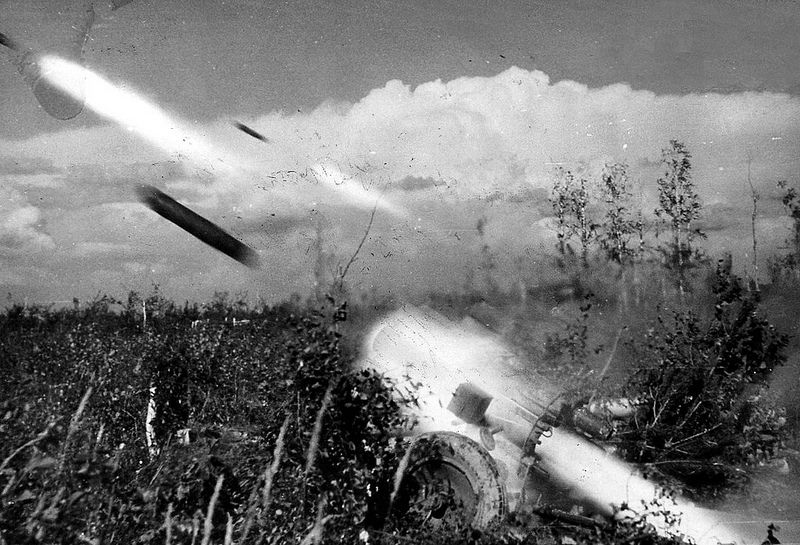 front, 1,600 artillery pieces, including Nebelwerfer rocket (picture above) artillery, opened up a 90-minute barrage. American commanders were under the impression that the barrage, though intense, was anticipated. Days before the 16th, the 2nd Division had attacked German positions in the Wahlerscheid sector and pushed further into the Seigfried line, the well-defended West Wall along Germany’s border with Belgium and Luxembourg. The artillery barrage was expected as the opening move of a local counterattack, but all along the front, German troops and tanks were spilling out of the forest into American positions.
front, 1,600 artillery pieces, including Nebelwerfer rocket (picture above) artillery, opened up a 90-minute barrage. American commanders were under the impression that the barrage, though intense, was anticipated. Days before the 16th, the 2nd Division had attacked German positions in the Wahlerscheid sector and pushed further into the Seigfried line, the well-defended West Wall along Germany’s border with Belgium and Luxembourg. The artillery barrage was expected as the opening move of a local counterattack, but all along the front, German troops and tanks were spilling out of the forest into American positions.
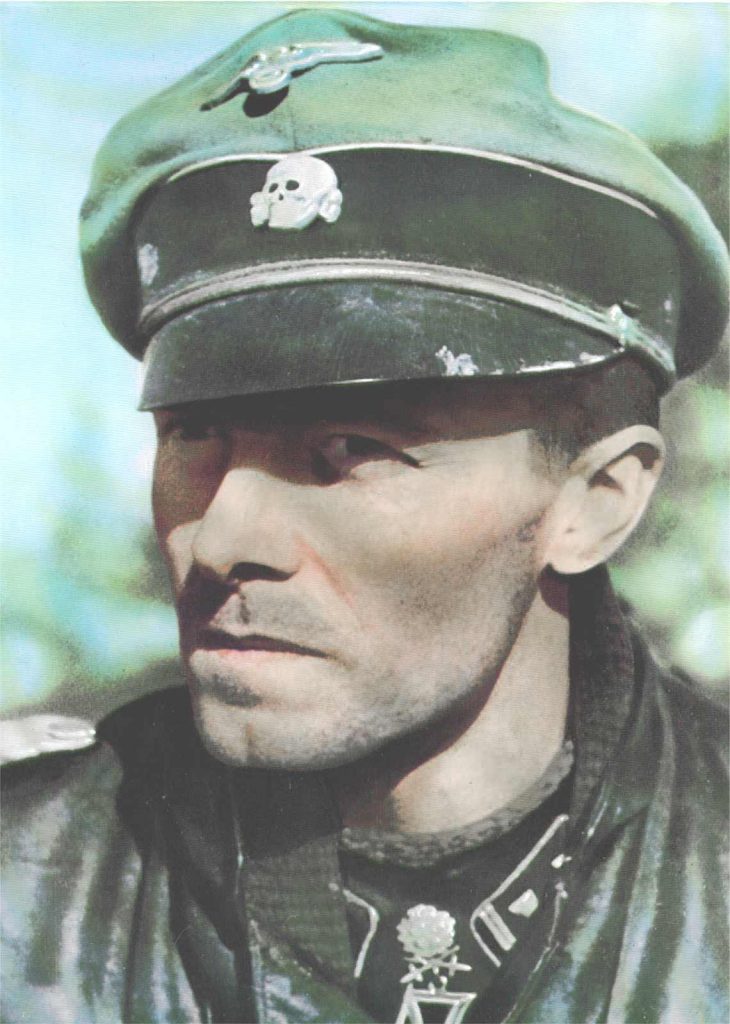 On the Northern “shoulder” of the German attack, Hitler’s handpicked Sixth Panzer Army, led by Colonel Joachim Peiper’s Kampfgruppe (Combat group, an ad hoc combined-arms formation) Peiper, was running into problems. The 2nd and 99th Infantry Divisions, already anticipating some kind of attack, put up a fierce resistance. Trying to preserve his armor for the drive to Antwerp and perhaps not show the strength of his force right away, Peiper elected to send in the 500-strong 9th Fallschirmjaeger Regiment to clear the village of Lanzerath, working to capture the road between Losheim and Losheimergraben and capture the dominating Elsenborn ridge. Near Lanzerath, the 9th Fallschirmjaeger Regiment ran into the hastily prepared defenses of the 18-man 99th Infantry Division’s Intelligence and Reconnaisance (I&R) Platoon. In the small but vicious battle that followed, the I&R platoon delayed Kampfgruppe Peiper’s advance for over 16 hours, causing 5-to-1 casualties amongst the German parachute regiment before being captured that evening, having fought against insurmountable odds. The Battle of Lanzerath Ridge, delaying the 6th Panzer Army for nearly a day, was a key moment in shaping the American victory in the Ardennes.
On the Northern “shoulder” of the German attack, Hitler’s handpicked Sixth Panzer Army, led by Colonel Joachim Peiper’s Kampfgruppe (Combat group, an ad hoc combined-arms formation) Peiper, was running into problems. The 2nd and 99th Infantry Divisions, already anticipating some kind of attack, put up a fierce resistance. Trying to preserve his armor for the drive to Antwerp and perhaps not show the strength of his force right away, Peiper elected to send in the 500-strong 9th Fallschirmjaeger Regiment to clear the village of Lanzerath, working to capture the road between Losheim and Losheimergraben and capture the dominating Elsenborn ridge. Near Lanzerath, the 9th Fallschirmjaeger Regiment ran into the hastily prepared defenses of the 18-man 99th Infantry Division’s Intelligence and Reconnaisance (I&R) Platoon. In the small but vicious battle that followed, the I&R platoon delayed Kampfgruppe Peiper’s advance for over 16 hours, causing 5-to-1 casualties amongst the German parachute regiment before being captured that evening, having fought against insurmountable odds. The Battle of Lanzerath Ridge, delaying the 6th Panzer Army for nearly a day, was a key moment in shaping the American victory in the Ardennes.
However, in the central part of the German advance, things were going smoothly for the German attackers. Along the 20 mile Schnee Eifel sector, the 5th Panzer Army attacked positions held by the U.S. 106th and 28th Divisions. Even though they didn’t have the overwhelming superiority enjoyed by the 6th Panzer Army to the North, the 5th still had a technical and numerical superiority over the thinly spread American Divisions. Adding to their capability, the 5th was led by General Der Panzertruppen (General of Armored Forces) Hasso von Manteuffel, a shrewd leader and mechanized warfare expert who cut his teeth in combat on the Eastern Front. Manteuffel found an undefended gap between American-held villages and split his 18th Volksgrenadier Division to encircle American forces on the Schnee Eifel Ridge in a pincer maneuver, and forced two nearly intact U.S. Regiments to surrender (these were the 422nd and 423rd Regiments of the 106th Division.) The 5th Panzer Army continued with this momentum and moved to capture the critically important road junctions in the city of St. Vith.
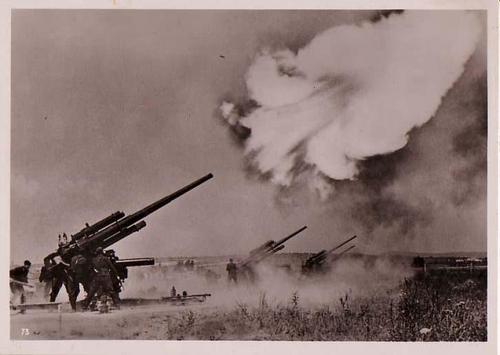 In the South, Erich Brandenberger’s 7th Army crossed the Our River and began to move to assist von Manteuffel’s push towards St. Vith and towards the equally important road junctions in the city of Bastogne. Initially, the 7th Army ran into the dogged defense of the American 28th Infantry Division, a Division with more experience than the 106th further to the North. The 28th’s 112th Infantry Regiment fought hard to delay the German advance by holding the bridges near the village of Ouren for two days before progressively withdrawing to better positions in the west. The 109th and 110th Infantry Regiments fared worse, though, and were so thinly spread that they were bypassed, but not before putting up such fierce resistance that it threw the 7th Army’s timetable off by several days. Columns of Brandenberger’s Panzer’s split the American forces in two, reaching points around Bastogne within four days.
In the South, Erich Brandenberger’s 7th Army crossed the Our River and began to move to assist von Manteuffel’s push towards St. Vith and towards the equally important road junctions in the city of Bastogne. Initially, the 7th Army ran into the dogged defense of the American 28th Infantry Division, a Division with more experience than the 106th further to the North. The 28th’s 112th Infantry Regiment fought hard to delay the German advance by holding the bridges near the village of Ouren for two days before progressively withdrawing to better positions in the west. The 109th and 110th Infantry Regiments fared worse, though, and were so thinly spread that they were bypassed, but not before putting up such fierce resistance that it threw the 7th Army’s timetable off by several days. Columns of Brandenberger’s Panzer’s split the American forces in two, reaching points around Bastogne within four days.
Thank you so much for reading! Believe it or not, that was just the first day of the battle! Next week, we will take a short break and discuss the men and machines involved in the attack, both Allied and Axis.



